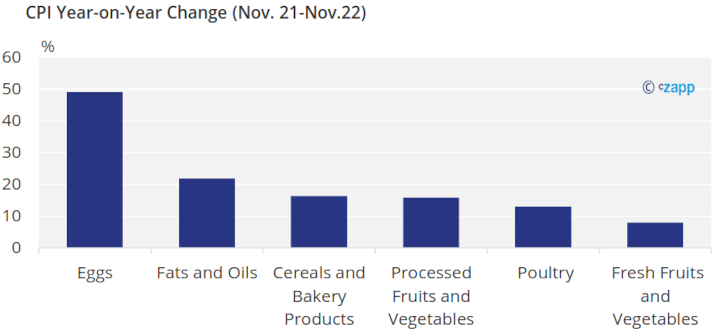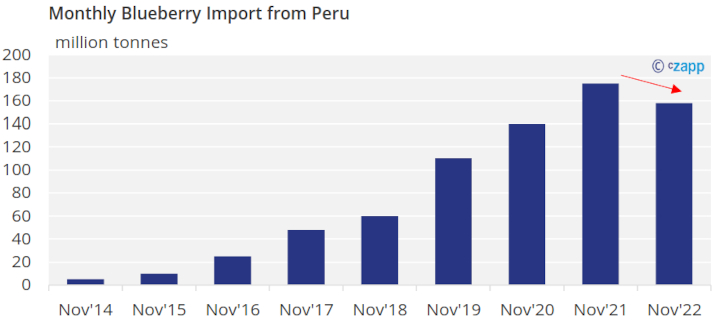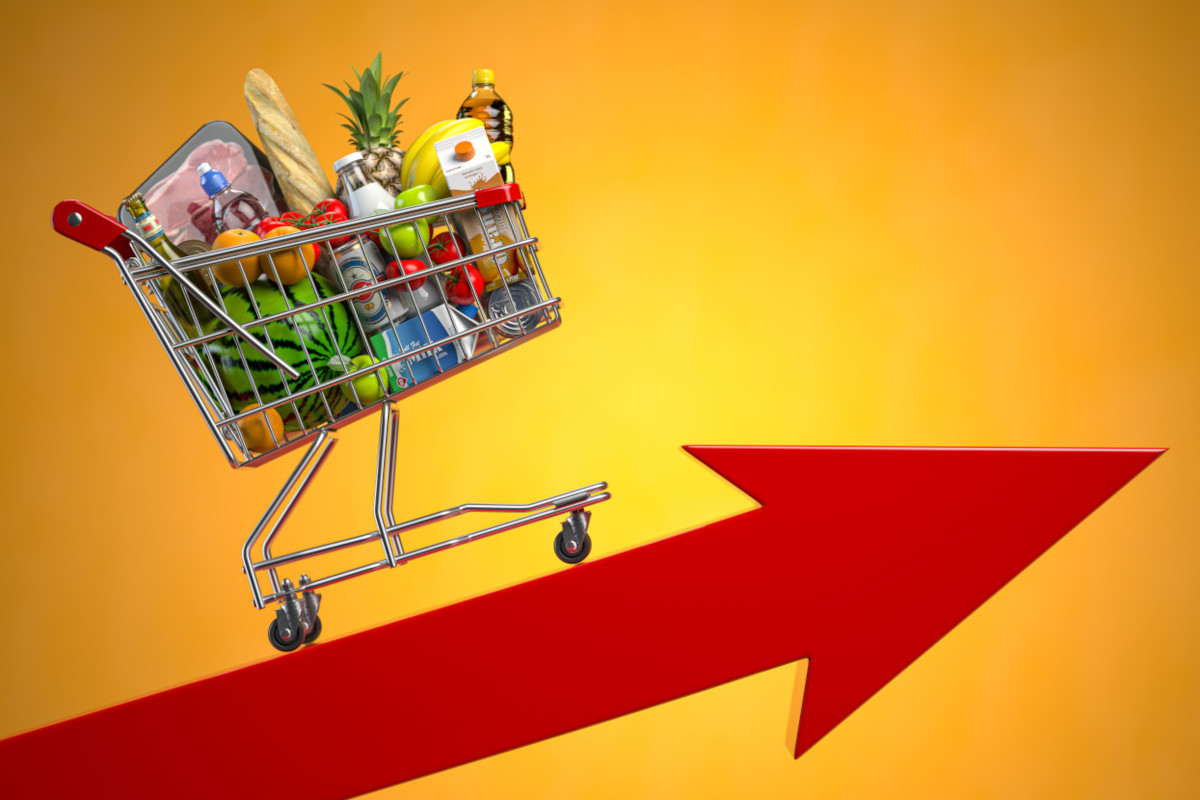Insight Focus
- Some American food prices are rising sharply.
- Egg prices have become major news after supply fell due to avian flu.
- Unrest in Peru risks slowing American supplies of fresh fruit and vegetables.
Inflation returned to the US in 2022, with food and energy prices rising sharply.
The most significant food price increases were for eggs, poultry, fresh and processed fruits, and vegetables. This was mostly caused by decreases in supply due to problems in each product’s supply chain. Some of these problems haven’t gone away and high prices could sustain in 2023.
Consumer Price Index Increases Significantly for Eggs, Poultry, Fruits and Vegetables
The consumer price index for eggs, fats and oils, cereal and bakery products, processed fruits and vegetables, poultry and fresh fruits and vegetables has increased by 49%, 21.8% 16.4%, 15.8%, 13.1% and 8% respectively. The main reason why prices for these products are higher is because of decreases in production or imports to cover domestic demand.

Source: USDA
Avian Influenza Outbreak in 2022
Overall egg production in the US is down due to the rapid spread of the Avian Influenza. As of January, there have been 58.1 million birds affected by the Avian Influenza. In addition, costs of production (labour) have continued to increase in this sector. This has led to an increase in prices as well as empty shelves in grocery stores. For reference, In January of 2022 the average price for a dozen eggs in the US was around $1.40 and by November of 2022 the price increased to $3.60. In December alone the price of eggs increased by 11% compared to November. The Avian Influenza is also affecting the availability of poultry. According to the USDA, poultry prices increased between 17-20% in 2022 alone.

Source: The New York Times
This increase in price is also affecting products that contain eggs like cereals, bakery products and fat & oil products like mayonnaise. So far this Avian Flu has lasted and has had a larger impact on the industry than “the largest poultry health disaster in US History” in 2014-2015. However, eggs, poultry and products that contain eggs are not the only products that are seeing increasing price due to supply availability. Fruits and vegetables are also seeing an increase in price due to drought and import complications affecting over all supply in the US.
Fruits and Vegetable Prices Spiked in 2022
Both fresh and frozen vegetable prices spiked in 2022 due to below-normal temperatures in the producing states in the Southwestern region, drought in the Salinas Velley and heavy rains in both coasts and Mexico as well. In addition, there has been an increase in production costs (transportation, pesticides, and irrigation) in major vegetable producing states.

Source: USDA
Prices for fruits have also increased compared to last year. Some of the fruits that have contributed to the spike in prices are grapes, cherries, peaches, pear, and blueberries. This is mostly due to a decrease in domestic production due to weather. The supply of blueberries on the other hand is not related to domestic production but rather import availability. The US is a net importer of blueberries and gets most of its blueberries from Peru. Since November, Peru has faced social unrest which has led to disruptions in the agricultural sector through road blockages which are preventing people to go to work and preventing the products to get to the ports. Ports are now facing a severe backlog and are unsure if they will be able to keep up with demand.

Source: Bloomberg
The months of November and December are crucial for blueberry imports from Peru and so far imports for November are down compared to last year. Social unrest has continued to be an issue in Peru to this day. This has led to increases in prices due to a decrease in product availability.
What does this Mean for Consumers?
This is affecting consumers because not only are they seeing higher prices at grocery stores, but they are also seeing increasing prices in products containing these products and some stores are limiting consumers purchasing amounts of these goods. Also, restaurants are also having to increase their prices to keep up with increasing production costs. In the short term, US consumers can expect to see higher prices while farmers and importers work out a way to overcome supply chain complications.














